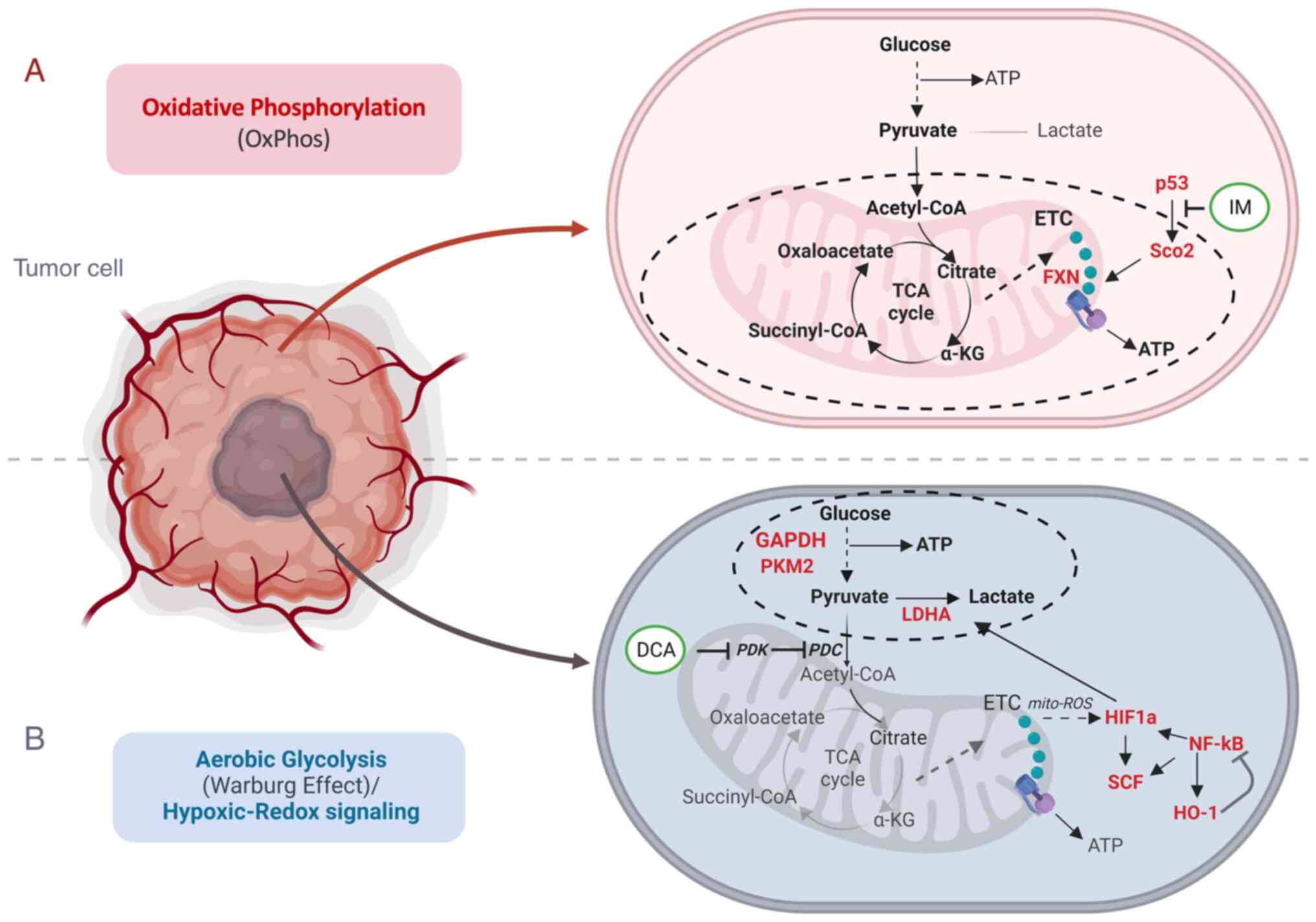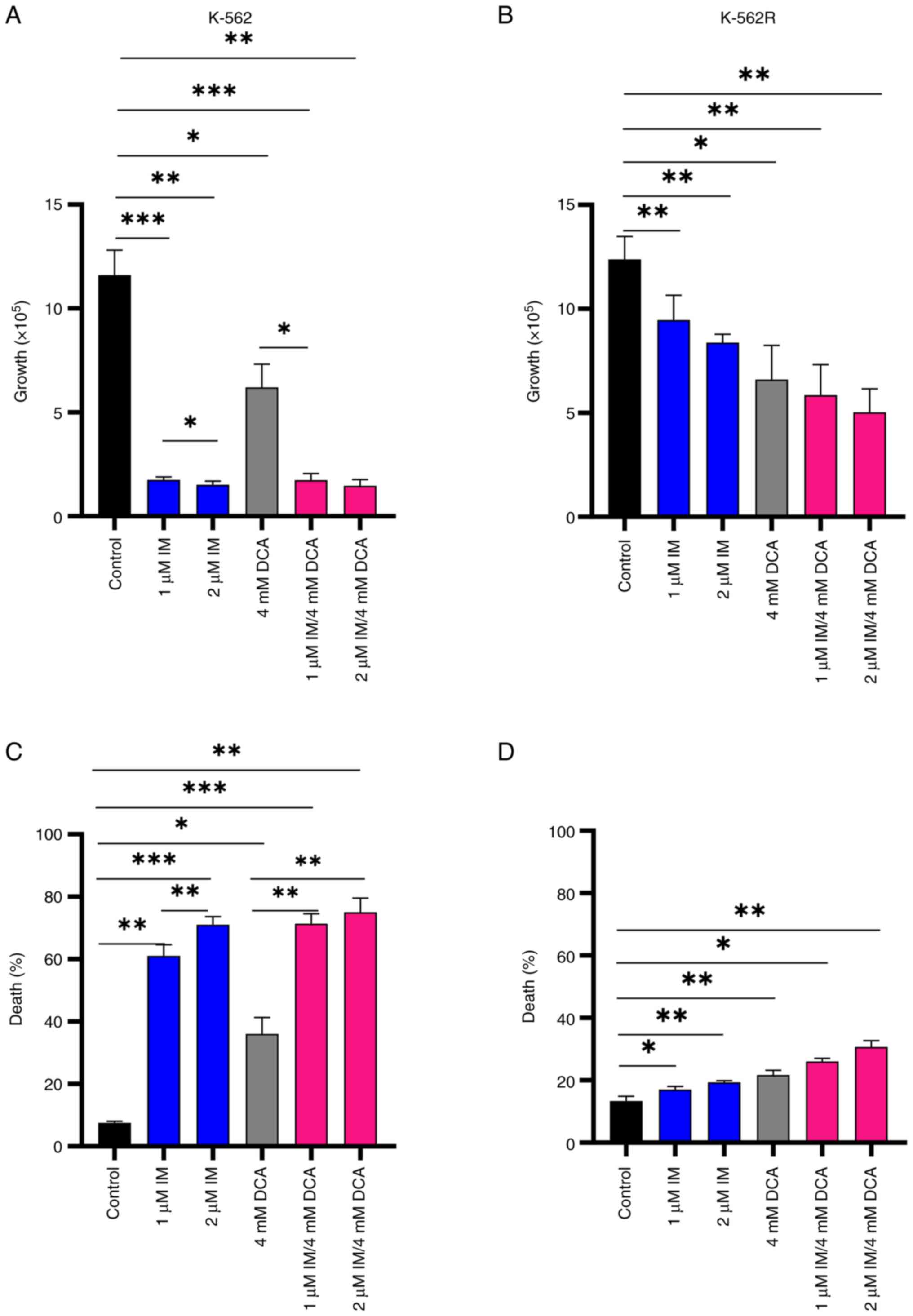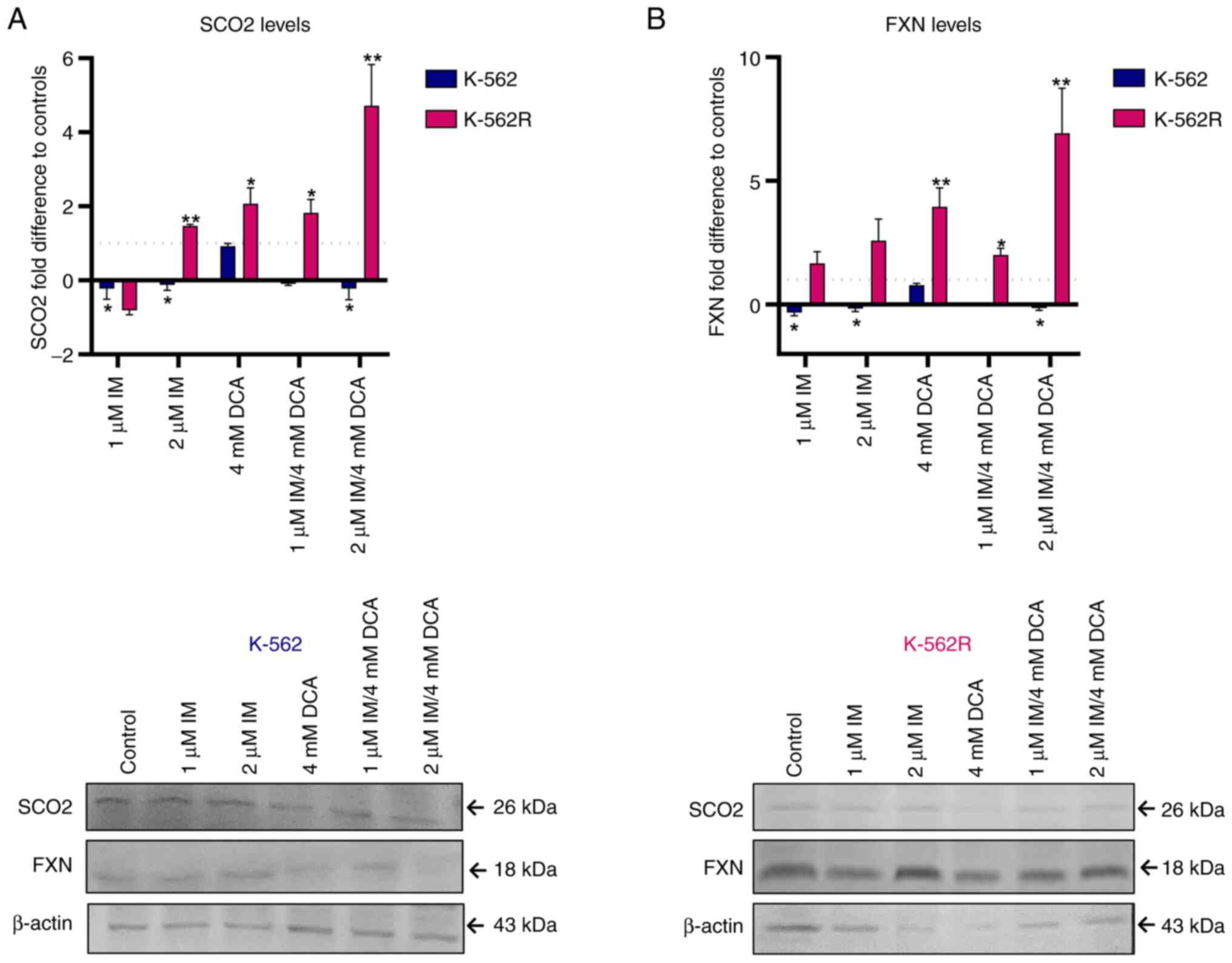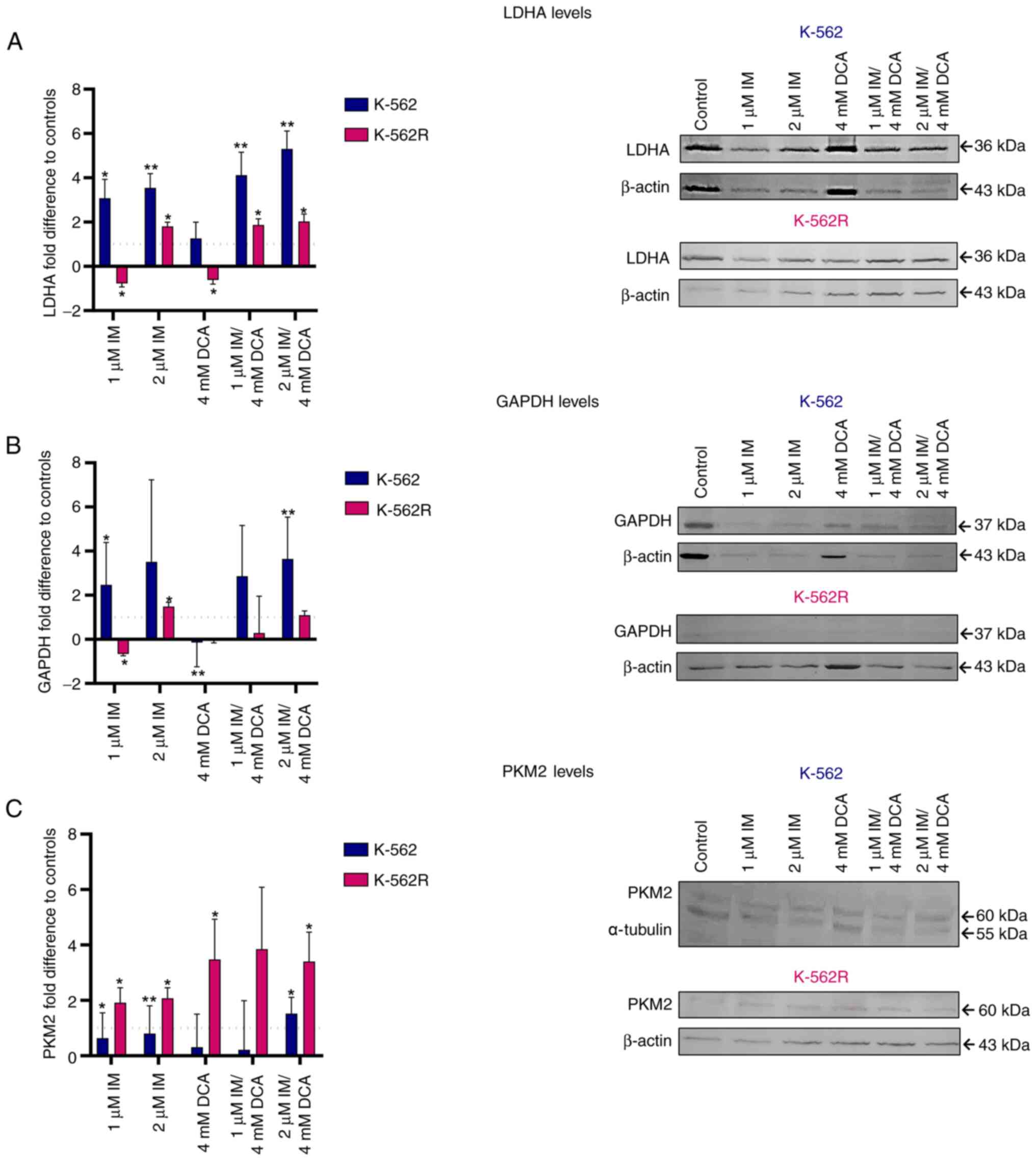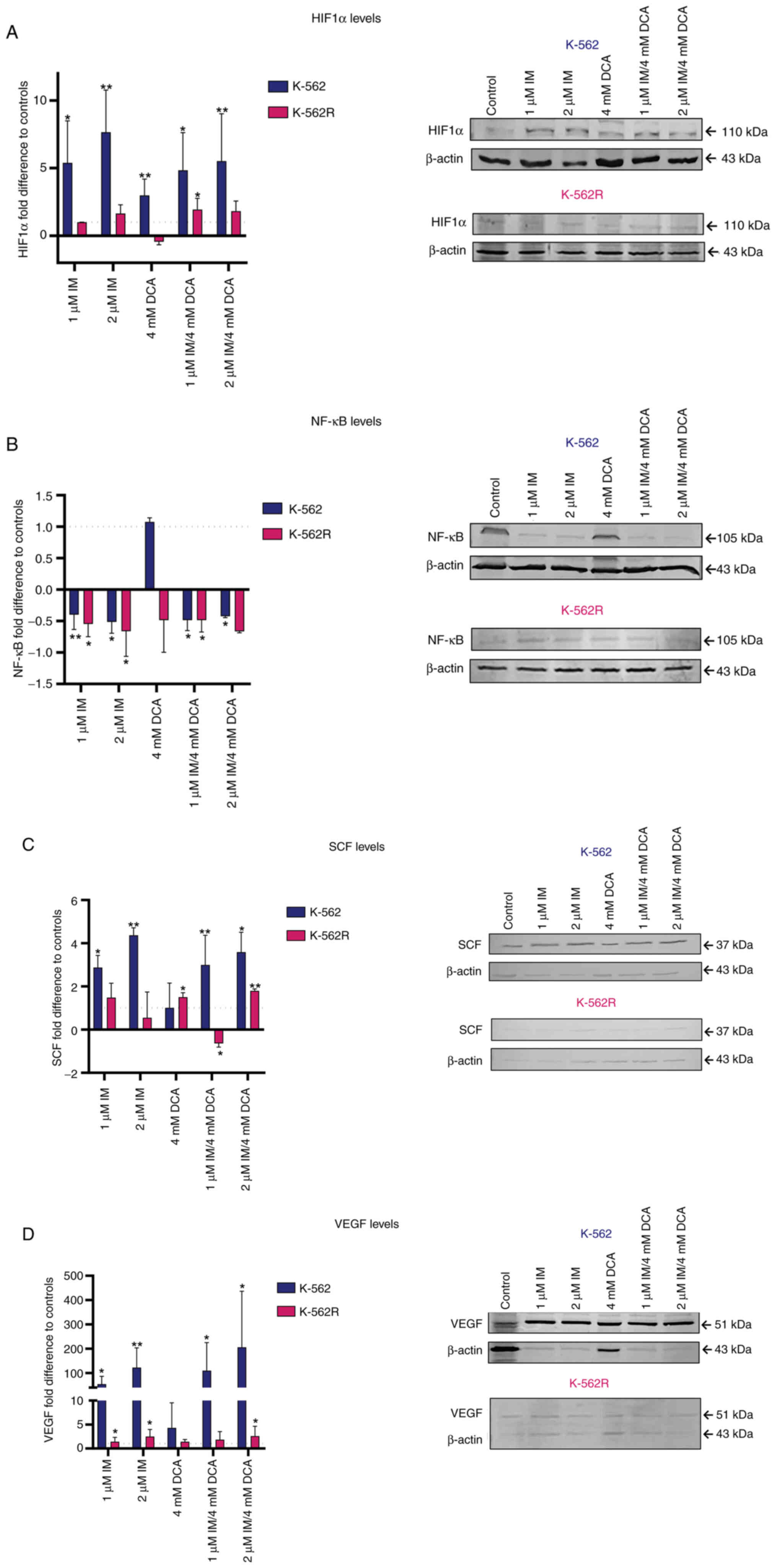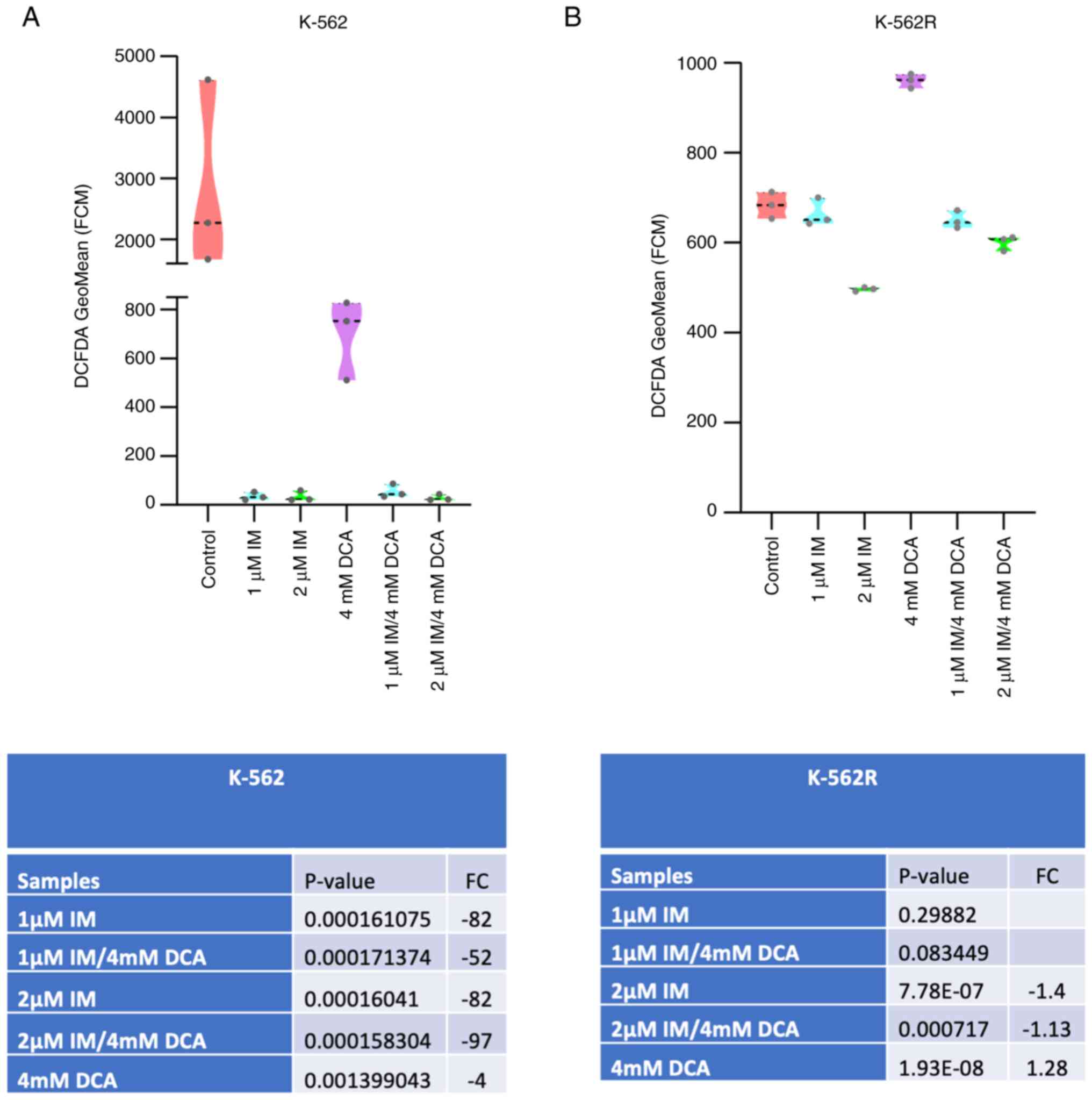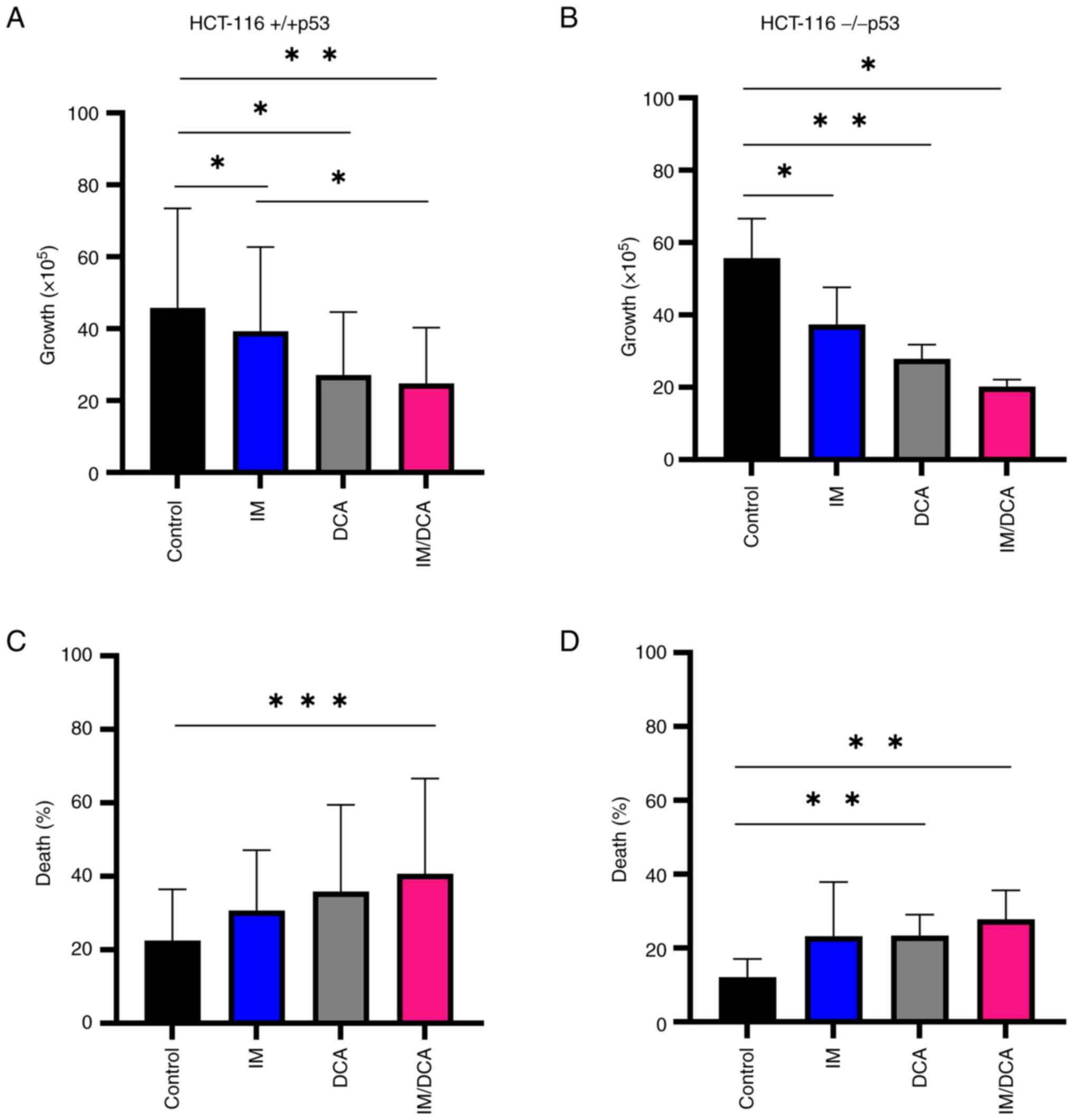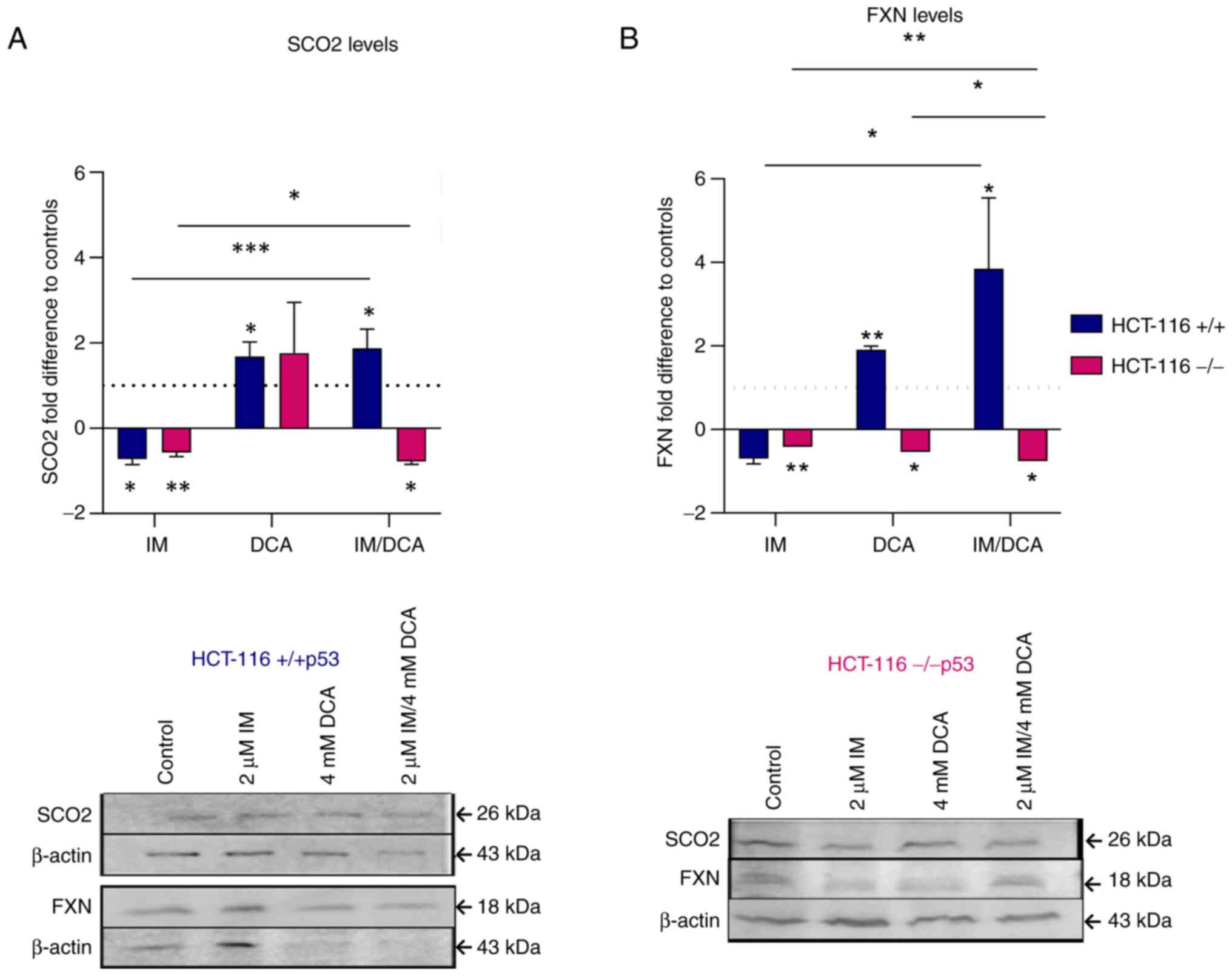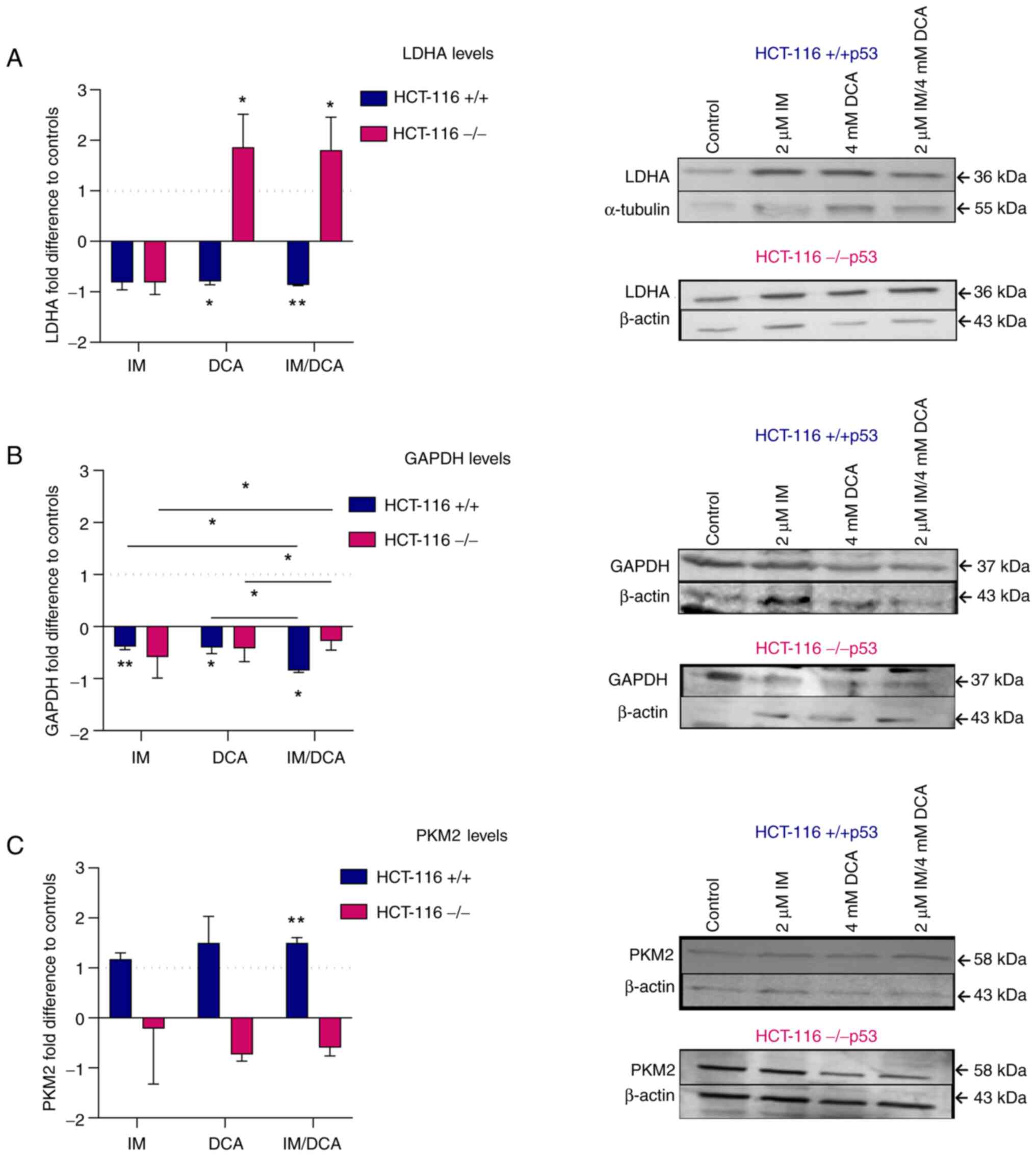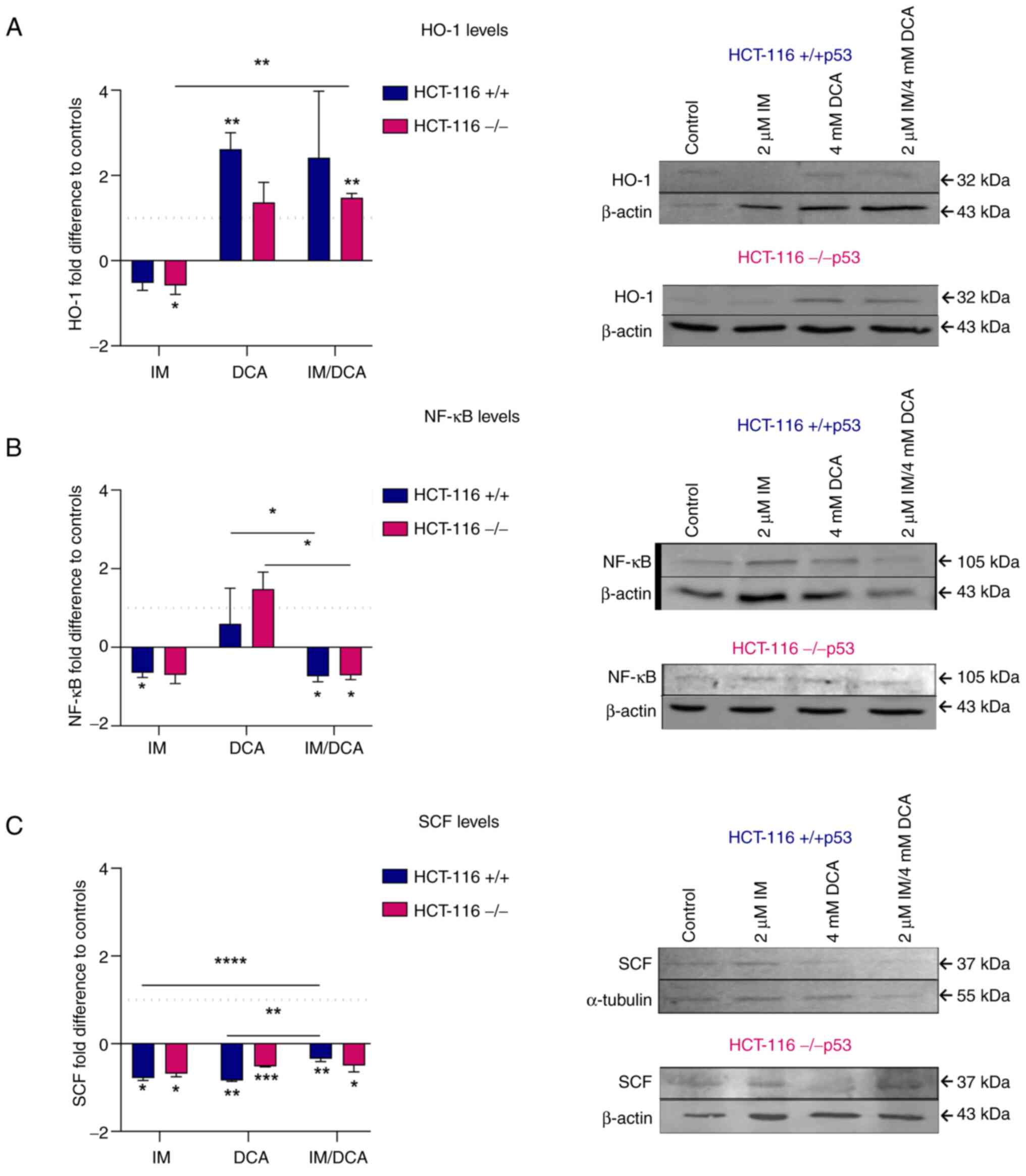|
1
|
Hanahan D and Weinberg RA: The hallmarks
of cancer. Cell. 100:57–70. 2000. View Article : Google Scholar : PubMed/NCBI
|
|
2
|
Hanahan D and Weinberg RA: Hallmarks of
cancer: The next generation. Cell. 144:646–674. 2011. View Article : Google Scholar : PubMed/NCBI
|
|
3
|
Bartman CR, Weilandt DR, Shen Y, Lee WD,
Han Y, TeSlaa T, Jankowski CSR, Samarah L, Park NR, da Silva-Diz V,
et al: Slow TCA flux and ATP production in primary solid tumours
but not metastases. Nature. 614:349–357. 2023. View Article : Google Scholar : PubMed/NCBI
|
|
4
|
Schwartz L, Supuran CT and Alfarouk KO:
The warburg effect and the hallmarks of cancer. Anticancer Agents
Med Chem. 17:164–170. 2017. View Article : Google Scholar
|
|
5
|
Alam MM, Lal S, FitzGerald KE and Zhang L:
A holistic view of cancer bioenergetics: Mitochondrial function and
respiration play fundamental roles in the development and
progression of diverse tumors. Clin Transl Med. 5:32016. View Article : Google Scholar : PubMed/NCBI
|
|
6
|
Bernard G, Bellance N, James D, Parrone P,
Fernandez H, Letellier T and Rossignol R: Mitochondrial
bioenergetics and structural network organization. J Cell Sci.
120:838–848. 2007. View Article : Google Scholar
|
|
7
|
Blasiak J, Hoser G, Bialkowska-Warzecha J,
Pawlowska E and Skorski T: Reactive oxygen species and
mitochondrial DNA damage and repair in BCR-ABL1 cells resistant to
imatinib. Biores Open Access. 4:334–342. 2015. View Article : Google Scholar : PubMed/NCBI
|
|
8
|
Prieto-Bermejo R, Romo-González M,
Pérez-Fernández A, Ijurko C and Hernández-Hernández Á: Reactive
oxygen species in haematopoiesis: Leukaemic cells take a walk on
the wild side. J Exp Clin Cancer Res. 37:1–18. 2018. View Article : Google Scholar
|
|
9
|
Murphy MP: How mitochondria produce
reactive oxygen species. Biochem J. 417:1–13. 2009. View Article : Google Scholar
|
|
10
|
Warburg O: On respiratory impairment in
cancer cells. Science. 124:269–270. 1956. View Article : Google Scholar : PubMed/NCBI
|
|
11
|
Warburg O: The metabolism of carcinoma
cells. J Cancer Res. 9:148–163. 1925. View Article : Google Scholar
|
|
12
|
Heiden MGV, Cantley LC and Thompson CB:
Understanding the warburg effect: The metabolic requirements of
cell proliferation. Science. 324:1029–1033. 2009. View Article : Google Scholar
|
|
13
|
Matoba S, Kang JG, Patino WD, Wragg A,
Boehm M, Gavrilova O, Hurley PJ, Bunz F and Hwang PM: p53 regulates
mitochondrial respiration. Science. 312:1650–1653. 2006. View Article : Google Scholar : PubMed/NCBI
|
|
14
|
Kamp WM, Wang PY and Hwang PM: TP53
mutation, mitochondria and cancer. Curr Opin Genet Dev. 38:16–22.
2016. View Article : Google Scholar : PubMed/NCBI
|
|
15
|
Papadopoulou LC, Sue MC, Davidson MM,
Tanji K, Nishino I, Sadlock JE, Krishna S, Walker W, Selby J,
Glerum DM, et al: Fatal infantile cardioencephalomyopathy with COX
deficiency and mutations in SCO2, a COX assembly gene. Nat Genet.
23:333–337. 1999. View
Article : Google Scholar : PubMed/NCBI
|
|
16
|
Blandino G, Valenti F, Sacconi A and Di
Agostino S: Wild type- and mutant p53 proteins in mitochondrial
dysfunction: Emerging insights in cancer disease. Semin Cell Dev
Biol. 98:105–117. 2020. View Article : Google Scholar
|
|
17
|
Miliotou AN, Foltopoulou PF,
Ingendoh-Tsakmakidis A, Tsiftsoglou AS, Vizirianakis IS, Pappas IS
and Papadopoulou LC: Protein transduction Domain-mediated delivery
of recombinant proteins and in vitro transcribed mRNAs for protein
replacement therapy of human severe genetic mitochondrial
disorders: The case of Sco2 deficiency. Pharmaceutics. 15:2862023.
View Article : Google Scholar : PubMed/NCBI
|
|
18
|
Chadha R, Shah R and Mani S: Analysis of
reported SCO2 gene mutations affecting cytochrome c oxidase
activity in various diseases. Bioinformation. 10:329–333. 2014.
View Article : Google Scholar : PubMed/NCBI
|
|
19
|
Arora B, Gota V, Menon H, Sengar M, Nair
R, Patial P and Banavali SD: Therapeutic drug monitoring for
imatinib: Current status and Indian experience. Indian J Med
Paediatr Oncol. 34:224–228. 2013. View Article : Google Scholar
|
|
20
|
Soverini S, Martinelli G, Lacobucci I and
Baccarani M: Imatinib mesylate for the treatment of chronic myeloid
leukemia. Expert Rev Anticancer Ther. 8:853–864. 2008. View Article : Google Scholar : PubMed/NCBI
|
|
21
|
Ramirez P and DiPersio JF: Therapy options
in imatinib failures. Oncologist. 13:424–434. 2008. View Article : Google Scholar : PubMed/NCBI
|
|
22
|
Maekawa T, Ashihara E and Kimura S: The
Bcr-Abl tyrosine kinase inhibitor imatinib and promising new agents
against Philadelphia chromosome-positive leukemias. Int J Clin
Oncol. 12:327–340. 2007. View Article : Google Scholar : PubMed/NCBI
|
|
23
|
Deininger M, Buchdunger E and Druker BJ:
The development of imatinib as a therapeutic agent for chronic
myeloid leukemia. Blood. 105:2640–2653. 2005. View Article : Google Scholar
|
|
24
|
Papadopoulou LC, Kyriazou AV, Bonovolias
ID and Tsiftsoglou AS: Imatinib inhibits the expression of SCO2 and
FRATAXIN genes that encode mitochondrial proteins in human Bcr-Abl+
leukemia cells. Blood Cells Mol Dis. 53:84–90. 2014. View Article : Google Scholar : PubMed/NCBI
|
|
25
|
Chang SP, Shen SC, Lee WR, Yang LL and
Chen YC: Imatinib mesylate induction of ROS-dependent apoptosis in
melanoma B16F0 cells. J Dermatol Sci. 62:183–191. 2011. View Article : Google Scholar : PubMed/NCBI
|
|
26
|
Redza-Dutordoir M and Averill-Bates DA:
Activation of apoptosis signalling pathways by reactive oxygen
species. Biochim Biophys Acta. 1863:2977–2992. 2016. View Article : Google Scholar : PubMed/NCBI
|
|
27
|
Perillo B, Di Donato M, Pezone A, Di Zazzo
E, Giovannelli P, Galasso G, Castoria G and Migliaccio A: ROS in
cancer therapy: the bright side of the moon. Exp Mol Med.
52:192–203. 2020. View Article : Google Scholar : PubMed/NCBI
|
|
28
|
Kon S, Ishibashi K, Katoh H, Kitamoto S,
Shirai T, Tanaka S, Kajita M, Ishikawa S, Yamauchi H and Yako Y:
Cell competition with normal epithelial cells promotes apical
extrusion of transformed cells through metabolic changes. Nat Cell
Biol. 19:530–541. 2017. View Article : Google Scholar : PubMed/NCBI
|
|
29
|
Tataranni T and Piccoli C: Dichloroacetate
(DCA) and cancer: An overview towards clinical applications. Oxid
Med Cell Longev. 2019:82010792019. View Article : Google Scholar : PubMed/NCBI
|
|
30
|
Delaney LM, Ho N, Morrison J, Farias NR,
Mosser DD and Coomber BL: Dichloroacetate affects proliferation but
not survival of human colorectal cancer cells. Apoptosis. 20:63–74.
2015. View Article : Google Scholar
|
|
31
|
Michelakis ED, Webster L and Mackey JR:
Dichloroacetate (DCA) as a potential metabolic-targeting therapy
for cancer. Br J Cancer. 99:989–994. 2008. View Article : Google Scholar : PubMed/NCBI
|
|
32
|
Castro I, Sampaio-Marques B and Ludovico
P: Targeting metabolic reprogramming in acute myeloid leukemia.
Cells. 8:9672019. View Article : Google Scholar : PubMed/NCBI
|
|
33
|
Zhang JY, Zhang F, Hong CQ, Giuliano AE,
Cui XJ, Zhou GJ, Zhang GJ and Cui YK: Critical protein GAPDH and
its regulatory mechanisms in cancer cells. Cancer Biol Med.
12:10–22. 2015.PubMed/NCBI
|
|
34
|
Gupta V and Bamezai RNK: Human pyruvate
kinase M2: A multifunctional protein. Protein Sci. 19:2031–2044.
2010. View Article : Google Scholar : PubMed/NCBI
|
|
35
|
Pouysségur J and Ždralević M: Reply to
beltinger: Double genetic disruption of lactate dehydrogenases A
and B is required to ablate the 'Warburg effect' restricting tumor
growth to oxidative metabolism. J Biol Chem. 294:672019. View Article : Google Scholar
|
|
36
|
Beltinger C: LDHA and LDHB are dispensable
for aerobic glycolysis in neuroblastoma cells while promoting their
aggressiveness. J Biol Chem. 294:662019. View Article : Google Scholar : PubMed/NCBI
|
|
37
|
Ždralević M, Brand A, Di Ianni L, Dettmer
K, Reinders J, Singer K, Peter K, Schnell A, Bruss C, Decking SM,
et al: Double genetic disruption of lactate dehydrogenases A and B
is required to ablate the 'Warburg effect' restricting tumor growth
to oxidative metabolism. J Biol Chem. 293:15947–15961. 2018.
View Article : Google Scholar
|
|
38
|
Valvona CJ, Fillmore HL, Nunn PB and
Pilkington GJ: The regulation and function of lactate dehydrogenase
A: Therapeutic potential in brain tumor. Brain Pathol. 26:3–17.
2016. View Article : Google Scholar
|
|
39
|
Missiaen R, Lesner NP and Simon MC: HIF: A
master regulator of nutrient availability and metabolic cross-talk
in the tumor microenvironment. EMBO J. 42:e1120672023. View Article : Google Scholar : PubMed/NCBI
|
|
40
|
Stubbs M and Griffiths JR: The altered
metabolism of tumors: HIF-1 and its role in the Warburg effect. Adv
Enzyme Regul. 50:44–55. 2010. View Article : Google Scholar
|
|
41
|
Gavriilidis GI, Ntoufa S, Papakostantinou
N, Kotta K, Koletsa T, Chartomatsidou E, Moysiadis T, Stavroyianni
N, Anagnostopoulos A, Papadaki E, et al: Stem cell factor is
implicated in microenvironmental interactions and cellular dynamics
of chronic lymphocytic leukemia. Haematologica. 106:692–700. 2021.
View Article : Google Scholar :
|
|
42
|
Eberle F, Leinberger FH, Saulich MF,
Seeger W, Engenhart-Cabillic R, Hänze J, Hattar K, Dikomey E and
Subtil FSB: In cancer cell lines inhibition of SCF/c-Kit pathway
leads to radiosensitization only when SCF is strongly
over-expressed. Clin Transl Radiat Oncol. 2:69–75. 2017.PubMed/NCBI
|
|
43
|
Chiang SK, Chen SE and Chang LC: The role
of HO-1 and its crosstalk with oxidative stress in cancer cell
survival. Cells. 10:24012021. View Article : Google Scholar : PubMed/NCBI
|
|
44
|
Andrés NC, Fermento ME, Gandini NA, Romero
AL, Ferro A, Donna LG, Curino AC and Facchinetti MM: Heme
oxygenase-1 has antitumoral effects in colorectal cancer:
Involvement of p53. Exp Mol Pathol. 97:321–331. 2014. View Article : Google Scholar : PubMed/NCBI
|
|
45
|
Lingappan K: NF-κB in oxidative stress.
Curr Opin Toxicol. 7:81–86. 2018. View Article : Google Scholar : PubMed/NCBI
|
|
46
|
Johnson RF and Perkins ND: Nuclear
factor-κB, p53, and mitochondria: Regulation of cellular metabolism
and the Warburg effect. Trends Biochem Sci. 37:317–324. 2012.
View Article : Google Scholar : PubMed/NCBI
|
|
47
|
Mauro C, Leow SC, Anso E, Rocha S,
Thotakura AK, Tornatore L, Moretti M, De Smaele E, Beg AA,
Tergaonkar V, et al: NF-κB controls energy homeostasis and
metabolic adaptation by upregulating mitochondrial respiration. Nat
Cell Biol. 13:1272–1279. 2011. View Article : Google Scholar : PubMed/NCBI
|
|
48
|
Lozzio BB and Lozzio CB: Properties and
usefulness of the original K-562 human myelogenous leukemia cell
line. Leuk Res. 3:363–370. 1979. View Article : Google Scholar : PubMed/NCBI
|
|
49
|
Głowacki S, Synowiec E, Szwed M, Toma M,
Skorski T and Śliwiński T: Relationship between oxidative stress
and imatinib resistance in model chronic myeloid leukemia cells.
Biomolecules. 11:6102021. View Article : Google Scholar :
|
|
50
|
Lee F, Fandi A and Voi M: Overcoming
kinase resistance in chronic myeloid leukemia. Int J Biochem Cell
Biol. 40:334–343. 2008. View Article : Google Scholar : PubMed/NCBI
|
|
51
|
Bunz F, Dutriaux A, Lengauer C, Waldman T,
Zhou S, Brown JP, Sedivy JM, Kinzler KW and Vogelstein B:
Requirement for p53 and p21 to sustain G2 arrest after DNA damage.
Science. 282:1497–1501. 1998. View Article : Google Scholar : PubMed/NCBI
|
|
52
|
Bourdon JC: p53 and its isoforms in
cancer. Br J Cancer. 97:277–282. 2007. View Article : Google Scholar : PubMed/NCBI
|
|
53
|
Georgiou-Siafis SK and Tsiftsoglou AS:
Activation of KEAP1/NRF2 stress signaling involved in the molecular
basis of hemin-induced cytotoxicity in human pro-erythroid K562
cells. Biochem Pharmacol. 175:1139002020. View Article : Google Scholar : PubMed/NCBI
|
|
54
|
Foltopoulou PF, Tsiftsoglou AS, Bonovolias
ID, Ingendoh AT and Papadopoulou LC: Intracellular delivery of full
length recombinant human mitochondrial L-Sco2 protein into the
mitochondria of permanent cell lines and SCO2 deficient patient's
primary cells. Biochim Biophys Acta. 1802:497–508. 2010. View Article : Google Scholar : PubMed/NCBI
|
|
55
|
Bradford M: A rapid and sensitive method
for the quantitation of microgram quantities of protein utilizing
the principle of Protein-dye binding. Anal Biochem. 72:248–254.
1976. View Article : Google Scholar : PubMed/NCBI
|
|
56
|
Eruslanov E and Kusmartsev S:
Identification of ROS using oxidized DCFDA and flow-cytometry.
Methods Mol Biol. 594:57–72. 2010. View Article : Google Scholar : PubMed/NCBI
|
|
57
|
Szklarczyk D, Gable AL, Nastou KC, Lyon D,
Kirsch R, Pyysalo S, Doncheva NT, Legeay M, Fang T, Bork P, et al:
The STRING database in 2021: Customizable protein-protein networks,
and functional characterization of user-uploaded gene/measurement
sets. Nucleic Acids Res. 49:108002021. View Article : Google Scholar
|
|
58
|
Bunz F, Hwang PM, Torrance C, Waldman T,
Zhang Y, Dillehay L, Williams J, Lengauer C, Kinzler KW and
Vogelstein B: Disruption of p53 in human cancer cells alters the
responses to therapeutic agents. J Clin Invest. 104:263–269. 1999.
View Article : Google Scholar : PubMed/NCBI
|
|
59
|
Shimizu R, Lan NN, Tai TT, Adachi Y,
Kawazoe A, Mu A and Taketani S: P53 directly regulates the
transcription of the human frataxin gene and its lack of regulation
in tumor cells decreases the utilization of mitochondrial iron.
Gene. 551:79–85. 2014. View Article : Google Scholar : PubMed/NCBI
|
|
60
|
Zhou Y, Niu W, Luo Y, Li H, Xie Y, Wang H,
Liu Y, Fan S, Li Z, Xiong W, et al: p53/Lactate dehydrogenase A
axis negatively regulates aerobic glycolysis and tumor progression
in breast cancer expressing wild-type p53. Cancer Sci. 110:939–949.
2019. View Article : Google Scholar : PubMed/NCBI
|
|
61
|
Ciarcia R, Vitiello MT, Galdiero M,
Pacilio C, Iovane V, d'Angelo D, Pagnini D, Caparrotti G, Conti D,
Tomei V, et al: Imatinib treatment inhibit IL-6, IL-8, NF-KB and
AP-1 production and modulate intracellular calcium in CML patients.
J Cell Physiol. 227:2798–2803. 2012. View Article : Google Scholar
|
|
62
|
Teppo HR, Soini Y and Karihtala P:
Reactive oxygen Species-mediated mechanisms of action of targeted
cancer therapy. Oxid Med Cell Longev. 2017:14852832017. View Article : Google Scholar : PubMed/NCBI
|
|
63
|
Rockwell S, Sartorelli AC, Tomasz M and
Kennedy KA: Cellular pharmacology of quinone bioreductive
alkylating agents. Cancer Metastasis Rev. 12:165–176. 1993.
View Article : Google Scholar : PubMed/NCBI
|
|
64
|
Kennedy KA, Teicher BA, Rockwell S and
Sartorelli AC: The hypoxic tumor cell: A target for selective
cancer chemotherapy. Biochem Pharmacol. 29:1–8. 1980. View Article : Google Scholar : PubMed/NCBI
|
|
65
|
Li Y, Zhao L and Li XF: Targeting Hypoxia:
Hypoxia-activated prodrugs in cancer therapy. Front Oncol.
11:29202021.
|
|
66
|
Patraa S and Barondeaua DP: Mechanism of
activation of the human cysteine desulfurase complex by frataxin.
Proc Natl Acad Sci USA. 116:19421–19430. 2019. View Article : Google Scholar
|
|
67
|
Parent A, Elduque X, Cornu D, Belot L, Le
Caer JP, Grandas A, Toledano MB and D'Autréaux B: Mammalian
frataxin directly enhances sulfur transfer of NFS1 persulfide to
both ISCU and free thiols. Nat Commun. 6:56862015. View Article : Google Scholar : PubMed/NCBI
|
|
68
|
Grosso S, Puissant A, Dufies M, Colosetti
P, Jacquel A, Lebrigand K, Barbry P, Deckert M, Cassuto JP, Mari B
and Auberger P: Gene expression profiling of imatinib and
PD166326-resistant CML cell lines identifies Fyn as a gene
associated withresistance to BCR-ABL inhibitors. Mol Cancer Ther.
8:1924–1933. 2009. View Article : Google Scholar : PubMed/NCBI
|
|
69
|
Bosc C, Selak MA and Sarry JE: Resistance
is futile: Targeting mitochondrial energetics and metabolism to
overcome drug resistance in cancer treatment. Cell Metab.
26:705–707. 2017. View Article : Google Scholar : PubMed/NCBI
|
|
70
|
Allende-Vega N, Krzywi nska E, Orecchioni
S, Lopez-Royuela N, Reggiani F, Talarico G, Rossi JF, Rossignol R,
Hicheri Y, Cartron G, et al: The presence of wild type p53 in
hematological cancers improves the efficacy of combinational
therapy targeting metabolism. Oncotarget. 6:19228–19245. 2015.
View Article : Google Scholar : PubMed/NCBI
|
|
71
|
Maio N, Jain A and Rouault TA: Mammalian
iron-sulfur cluster biogenesis: Recent insights into the roles of
frataxin, acyl carrier protein and ATPase-mediated transfer to
recipient proteins. Curr Opin Chem Biol. 55:34–44. 2020. View Article : Google Scholar : PubMed/NCBI
|
|
72
|
Sawamoto M, Imai T, Umeda M, Fukuda K,
Kataoka T and Taketani S: The p53-dependent expression of frataxin
controls 5-aminolevulinic acid-induced accumulation of
protoporphyrin IX and photo-damage in cancerous cells. Photochem
Photobiol. 89:163–172. 2013. View Article : Google Scholar
|
|
73
|
Parczyk J, Ruhnau J, Pelz C, Schilling M,
Wu H, Piaskowski NN, Eickholt B, Kühn H, Danker K and Klein A:
Dichloroacetate and PX-478 exhibit strong synergistic effects in a
various number of cancer cell lines. BMC Cancer. 21:4812021.
View Article : Google Scholar : PubMed/NCBI
|
|
74
|
Sanchez WY, McGee SL, Connor T, Mottram B,
Wilkinson A, Whitehead JP, Vuckovic S and Catley L: Dichloroacetate
inhibits aerobic glycolysis in multiple myeloma cells and increases
sensitivity to bortezomib. Br J Cancer. 108:1624–1633. 2013.
View Article : Google Scholar : PubMed/NCBI
|
|
75
|
Rickard BP, Overchuk M, Chappell VA, Kemal
Ruhi M, Sinawang PD, Nguyen Hoang TT, Akin D, Demirci U, Franco W,
Fenton SE, et al: Methods to evaluate changes in mitochondrial
structure and function in cancer. Cancers (Basel). 15:25642023.
View Article : Google Scholar : PubMed/NCBI
|



